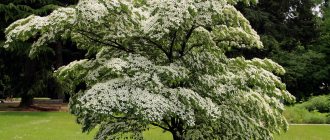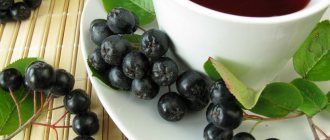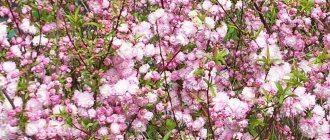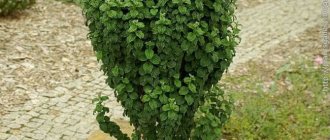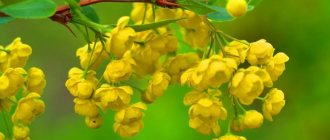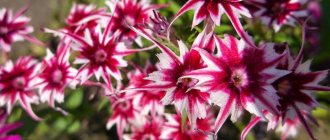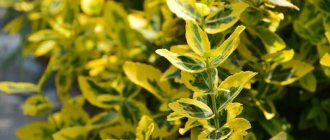0 9464
Such a luxurious plant as euonymus can easily transform an area that is in different forms. This flower is valued because it maintains an attractive appearance throughout the season. At the moment when, with the onset of autumn, most of the greenery becomes dull, this plant gains more and more decorative qualities.
Brief description of cultivation
Planting work begins with the onset of spring or autumn, when the leaves begin to fall. When choosing a place to plant a plant, it is worth considering the color of the leaves. If it is green, then for successful development it is necessary to provide partial shade, but if you have a variety with variegated colors, it is recommended to resort to a large amount of sunlight. Speaking about the soil, it is worth considering that the euonymus plant develops well in the presence of weak alkalinity indicators or its absence at all. Also, the soil must have good water carrying capacity, high nutritional qualities and be light in consistency.
The plant should not be watered often. This procedure is carried out only when the need arises. If there is frequent rain during the growing season, watering should not be done. Fertilizer work is carried out at the onset of spring and autumn. To do this, it is recommended to use a complex fertilizer of mineral origin.
In addition to the above conditions, pruning should also be carried out for successful growth. This work is done in the first days of spring or after the fruits ripen. The bush is pruned according to the formative and sanitary type. An ellipsoidal and conical crown will look good. In order to propagate a specimen, methods of cuttings, the use of layering, seeds, and also through dividing the bush are used.
Unfortunately, this representative of the flora can be affected by aphids, mites, caterpillars, mealybugs, as well as trunk rot and powdery mildew.
Fertilizing and feeding euonymus
If the necessary fertilizers were applied when planting shoots in open ground, fertilizing of the bushes begins after 3 years. It is better to apply fertilizers in May and September. In spring, slurry is prepared:
- cow (horse) manure is poured with water 1:10, bird droppings - 1:20;
- leave the solution for 10 days to ferment;
- Before watering, the concentrate is diluted with water 1:10.
Water the euonymus with slurry at the rate of 10 liters per bush. Instead of organic matter, you can feed the plant in the spring with nitrogen mineral fertilizer (50 g of urea per bucket of water). This will promote rapid growth of green mass.
In the summer, for the active formation of beautiful fruit boxes, potassium-phosphorus fertilizers are applied (40 g of potassium sulfate and double superphosphate per 10 liters of water). Autumn digging of the ground under the bush with 300 g of slaked lime will bring the soil prone to acidification back to normal.
Features of euonymus
The height of some wild species can reach four meters. Glossy foliage is painted along the contour with dark green paints. In some varieties, white, cream and silver spots can be observed on the leaves, located along the border or in the center. Flowers also develop on stems of round and tetrahedral cross-section. They are painted in burgundy, cream and greenish-yellow colors and are collected in 4-5 pieces in inflorescences resembling corymbs and brushes in shape. When the fruiting period comes, dry or leathery boxes appear on the bush. These fruits may consist of 4 or 5 nests or be a spiny or winged capsule with seeds inside. As the fruit ripens, it turns different shades - from yellow to deep purple. It is worth knowing that this plant contains poison in any part of it.
Growing euonymus from seeds
Euonymus seeds photo
Reproduction is carried out by seeds and vegetative methods (cuttings, dividing the bush, layering, root shoots).
Sowing in the ground
It is better to sow freshly collected seeds in open ground before winter. The bed is prepared in advance, leveled, and the soil is allowed to settle. Make shallow furrows with a hoe or flat cutter at a distance of 20-30 cm. You need to sow less frequently, ideally at a distance of 8-10 cm. If this does not work, the seedlings will have to be thinned out. Mulch the crops with straw and leaves.
How to sow euonymus in the ground photo
In spring, the mulch is removed as early as possible so that the plants can break through. Don’t wait for it to get warm, otherwise the seedlings will trample or you will damage them when you rake the leaves. When the plants sprout, care will consist of weeding, loosening the soil and moderate watering. Grown seedlings are planted in a permanent place after 2-3 years and must be covered for the winter.
Growing seedlings
Euonymus from seeds photo seedlings
- To grow seedlings, the seeds must be kept in water for a couple of days and stratified for 3-4 months (keep them in a bag of wet sand in the vegetable section of the refrigerator).
- The seeds should swell well under such conditions. Carefully peel the seeds from the bursting dense skin, soak for 15 minutes in a weak solution of potassium permanganate, and rinse.
- Prepare boxes or cups with fertile garden soil and a small amount of sand; you can take ready-made soil for seedlings).
- The seeding depth is 2 cm.
- Cover the crops with film or glass.
- Expect the emergence of seedlings in 15-20 days, then remove the cover.
- A slight decrease in temperature to 18°C will be beneficial for the plants so that they do not stretch out. Provide good diffused lighting.
- Grown seedlings need to be hardened two weeks before planting in the ground. They can be planted in a training bed, and then transplanted to a permanent place when they reach a height of 25-30 cm. Be sure to cover them for the winter so that they do not freeze.
Planting euonymus in open ground
What time to plant
Euonymus - planting and care involves some rules. Experienced gardeners advise planting shrubs in open areas in early spring or autumn. If only acidic soil is available, this problem can be solved by liming. This procedure should be performed before planting the specimen.
An important condition for choosing a planting site is the height of groundwater. If the water passes high, this will have a bad effect on the development of the bush. Due to the fact that it can grow widely and sometimes quite high, it is important to take into account the future size when planning the territory and planting other plants nearby. When growing dwarf varieties, it is recommended to use boxes or large pots. This will allow you to move the container to an unheated room with a cool temperature for the winter. Under such conditions, it becomes possible to grow euonymus at home and at the same time outdoors.
Landing Features
Before you start planting, you should prepare a hole for work. This must be completed within two weeks. The size of the hole should be half the volume of the roots. The upper part of the excavated soil must be combined with compost, and a drainage system made of sand or broken bricks must be organized at the bottom. A little soil-compost mixture is poured over the drainage system. If the soil is acidic, then you also need to pour 0.2 kg of slaked lime mixed with a soil-compost mixture into the hole.
When the hole for planting is ready, the shrub is placed in it, carefully distributing the roots. After this, gradually pour out the soil mixed with compost, carefully compacting it each time. This should be done so that there are no air pockets inside the soil. When the plant is already in the ground, you should check that the root collar and the surface of the ground are at the same level. After planting, all specimens are watered and then the soil is moistened for 7 days.
In the case of planning a hedge, a trench is made instead of a hole.
Shrub pruning
Pruning euonymus
Caring for euonymus in open ground includes annual pruning in spring and summer. After wintering, frost-damaged shoots and dead wood are removed and a crown of the desired shape is formed. Summer pruning is carried out to maintain the decorative appearance of the bush - weak and overly elongated shoots are pruned. The crown of single bushes is often formed in the form of a ball, cone or pyramid. Border plantings and hedges made of euonymus are trimmed in the shape of rectangles.
Euonymus care
Watering
The soil should be moderately moist. For large specimens, watering should be done abundantly, but not often. Thanks to this approach, the liquid will flow to the roots and saturate them with the necessary moisture. There are also low-growing species that are difficult to tolerate drought. On the contrary, they need to be watered often, but not so much.
The frequency of watering directly depends on seasonal rains and air temperature. During hot weather, watering must be done more often than during rainy periods.
Fertilizer
For high-quality growth of the shrub, it is necessary to carry out complex mineral fertilizing twice a year: in autumn and spring.
Trimming
To achieve greater attractiveness, euonymus should be pruned. It is important to take into account that in many varieties the fruits serve as decoration for the plant. For this reason, it is recommended to carry out the formative pruning procedure in early spring or after the fruits have ripened. During the growing season, only pruning should be done for sanitary purposes. To do this, remove all the shoots that cause the crown to become excessively thick, those that are injured and become weak. Also, during this work, pinch the upper parts of the branches.
Often this plant is formed as a standard tree, as well as in the shape of a cone or ellipse.
Diseases and pests
To properly care for euonymus, it is also necessary to combat diseases and harmful insects. For example, due to excessive amounts of moisture, powdery mildew can affect the bush. For treatment, it is necessary to use a suitable fungicidal solution every 7-10 days.
In addition to this problem, trunk rot can also occur, which is much more difficult to combat. It is recommended for prevention in the fall and spring to spray the plant with a solution that contains copper.
Unfortunately, this specimen has found great popularity among pests. Apple moth, thrips, spider mites, aphids, hawthorn and other insects can often infest the bush. For control, it is recommended to use insecticides such as Ratibor, Actellik, Fufon and other products with a wide spectrum of action.
Pest and disease control
Spider mites, mealybugs and codling moths are especially dangerous. Less commonly, red mites, scale insects and moths settle on trees. All of them spoil and destroy leaves, but complex insecticides help against all of them.
Drying of branches and necrosis of the bark most often occurs due to a fungal infection. The second most common fungus is ascochyta blight, as a result of which the leaves become covered with brown spots that gradually lighten. You need to get rid of the affected parts of the plant, and then treat everything with Bordeaux mixture.
Photo: fb.ru
Yasnotka (60 photos): types, planting and proper care
Euonymus propagation
To propagate euonymus, there are seed and cutting methods, as well as a method of dividing the bush and through layering. However, it is important to remember that varieties with bright leaves can only be propagated vegetatively.
Layerings
Preparation for this work must begin in the spring. At this time of year, the stems that are lowest to the ground are chosen. Grooves are made under them and twigs are laid in them, fixed, and then sprinkled with soil. Layerings take root quite quickly and having reached this period, the resulting specimens can be separated from the mother bush and planted as an independent plant in a new place.
Cuttings
For this method, shrubs older than 5 years are used. Cuttings are cut in early to mid-summer from the upper parts of those stems that are slightly woody. The cuttings need to be trimmed so that the length is 7 centimeters and each of them has one internode. The cut parts should be treated with a product that stimulates growth and planted in a container with a sand-peat mixture. Then they are covered with a transparent material and transferred to a bright but cool place for 6-8 weeks. After the designated time, the sprouts can be transplanted to the training bed and continue growing work with them.
Root suckers
The procedure begins in the first month of spring, when the soil has had time to warm up. To do this, it is necessary to select 40-50 centimeter suckers with roots 0.25-0.3 meters long and 1.5 centimeters in diameter. The selected specimens are cut off from the main plant, and then transplanted to a new territory, without shaking off the soil from the previous one.
Dividing the bush
This method is most often used for dwarf varieties. Due to the shallow location of the rhizome and the annual growth of new root shoots, you can easily separate the desired part from the parent plant using a sharp shovel. When the specimen is planted in the desired area, the shoots should be shortened by 2/3.
Seed propagation
In the fall, you should plant the seeds that you have just collected directly into open ground. In late autumn, these places are covered with mulch of straw or dry leaves.
Seeds can also be sown in spring, but to do this they need to be stratified. To do this, they are first kept in water for 2 days and then placed in the refrigerator for 6 months.
When and how to plant euonymus
The best time to plant euonymus in open ground is the beginning of spring, although autumn planting is also acceptable. Most species grow more readily in partial shade, next to trees with a large crown. Many varieties grow quickly due to the rooting of lower shoots, so they are planted away from fences (buildings) for ease of caring for the bushes. The culture is not suitable for low-lying areas with heavy soil, where water stagnates after rain.
Soil preparation
Preparing the soil for planting euonymus
To ensure that caring for euonymus in open ground does not cause trouble, it must be planted in fertile, loose soil. Permissible soil acidity is pH 6.6-7.5. Check the acidity level of the soil using litmus paper (sold in an agricultural store).
Acidic soil is alkalized by adding lime (0.2-0.5 kg/sq. m). Alkaline soil is acidified with gypsum (2-3 kg/10 sq. m). To improve the composition of heavy clay soil, it is dug up with a mixture of humus, sawdust and sand, taken in equal proportions (1 bucket per 1 sq. m).
Euonymus seedlings in pots before planting
Planting seedlings in open ground
A three-year-old euonymus seedling easily takes root in open ground. Planting crop shoots younger than 3 years old requires painstaking care. Algorithm for planting euonymus in open ground:
- You can plant shoots when the air temperature in spring does not drop below 5 degrees Celsius during the day.
- Dig holes at a distance of 0.7-1.5 m from each other. The volume of the hole should be 2 times greater than the root system of the seedling.
- Fill ¼ of the recess with a drainage layer (expanded clay, broken brick or crushed stone).
- Prepare the soil mixture: mix turf soil with leaf soil, humus (compost) and sand (ratio 3:1:1:1).
- Pour 10 cm of prepared soil on top of the drainage, place the seedling in the center, straighten the roots.
- Fill the hole to the top with soil, gently press it down with your hands to stabilize the shoot, and water it generously.
- When the soil settles, add soil and mulch (with sawdust, straw, sunflower husks, etc.).
- 2 weeks after planting, water the seedlings moderately when the top layer of soil dries 5-7 cm.
Euonymus in winter
Autumn care
The euonymus flower does not require complex care. If you need to collect seeds, it is recommended to do the work when the boxes are already cracking. Then you can proceed to planting seeds. To properly prepare the seeds for this stage, it is necessary to remove the seedlings and pickle them in a pink solution of potassium manganese. The soil should be moist during sowing. After the procedure, the area is mulched.
Features of wintering
All specimens aged 0-3 years should be covered with fallen leaves or spruce branches during the winter. There is no need to cover older species, but in frosty winters with little snow, it is recommended to cover the area around the trunk with sawdust or dry leaves.
Where to place the plant in the garden
If you need to grow a single tree, the Maak euonymus is suitable. This species loves sunlight and does not tolerate shade. For European varieties, the best place will be the shade of mature trees.
For a hedge, you should purchase Sakhalin or sacred euonymus. These plants produce rooting branches and are ground cover.
The soil for euonymus should be light with an alkaline or neutral reaction. The plant does not like clay and is grateful for mineral supplements.
Watering the bush should be moderate. All euonymuses do not like stagnant moisture and high groundwater.
Types and varieties of euonymus with photos and names
Both in their native habitat and in their garden plots, you can find quite a few different types of euonymus. The following describes the most common varieties in gardening.
Euonymus verrucosa or Euonymus verrucosa
This euonymus shrub can be seen in the south-eastern, central and southern European mountains, as well as in mountainous Russian territory. These are 2-meter shrubs and 5-6 meter trees with green branches covered with black warts. They are decorated with soft green foliage, light brown petals and pinkish fruits. When autumn approaches, the plant acquires pink colors on the foliage.
This variety is widespread due to the fact that it does not require much care, tolerates shade, and, despite all these indicators, is highly attractive.
Euonymus europaea
This beauty lives high on the slopes of any terrain, and also in broad-leaved forest areas of Europe and Asia Minor. 6-meter bush-like trees with green stems and longitudinal cork growths after some time change the color of the branches to almost black.
The surface of the 11-centimeter leaves is leathery, and their shape resembles an egg or something like an egg. Their dark green color changes to reddish in autumn. The color of ripe fruits is pink or dark red, and the stem is orange.
The variety is valued for its frost and drought resistance, as well as for its quiet growth and development in the city. The remaining representatives of the European variety are also attractive, but less resistant to unfavorable conditions.
Winged Euonymus euonymus alata
In countries such as Japan, South Sakhalin, Korea and China, you can find both a group species and a solitary one. It prefers to settle in places like river valleys, rocks, near mountain streams, as well as in deciduous forests. 2.5-meter bushes and relatively low trees are capable of growing a large number of branches. The branches have 4 sides and are painted grayish. The leaves are obovate or diamond-shaped, colored with rich green colors and have a leathery structure. Miniature inflorescences contain up to 3 soft green flowers. And the seed pods are full of bright red colors.
Fortune's euonymus fortunei
China is considered to be the homeland of this handsome man. It differs from the examples described above. For example, it does not grow upward, but spreads along the ground. A positive feature is its ability to remain evergreen and also grow quietly in mid-latitudes. In winter it is protected by snow cover. The 4-centimeter leaf blades can come in different shapes and colors, but they are all attractive in their own way. If the goal is to propagate one of the varieties, then it is necessary to use exclusively vegetative methods.
Caring for this species includes watering, loosening the soil around the trunk, mulching, pruning all injured branches, excessively green shoots, as well as weak ones.
The best varieties are recognized:
Euonymus fortunea emerald gold is a low bush that can grow up to 1.5 meters wide. The 5-centimeter pale yellow leaves are decorated with chaotic yellow streaks and spots, and by September-October they turn red.
Vegetus - on thick stems there are large leaves and yellowish boxes with a glossy surface.
Gracilis - 1.5-meter stems are decorated with pale yellow leaves. Over time, their surface is decorated with a white edge, and the middle turns red.
Japanese euonymus japonica
It is worth noting that this variety is the only one suitable for growing indoors and outdoors. Due to the small angle of growth of the branches, the effect of a bush directed upward is created. Dark green leaves with a pointed tip have an uneven light edge. For successful development, the specimen must organize certain conditions. Then over the year the growth will be 15-20 centimeters.
This species is very sensitive to low temperatures. Having reached 5 degrees, it may die. Therefore, it is recommended to plant it in a container in order to move it to a warm room with the onset of winter.
About the plant
Euonymus belongs to the genus of woody plants. The shrub belongs to the family Celastraceae, or Euonymus. The name of the plant comes from the Greek word euonymus, which literally means “glorious”, “with a noble name”. The name of the Euonymus species is inextricably linked with the name of the scientist who first described this shrub.
Synonyms in biological taxonomy related to this genus of plants:
- Evonymus;
- Kalonymus;
- Pragmotessara;
- Pragmotropa;
- Quadripterygium;
- Sphaerodiscus.
Once upon a time, the word “Euonymus” referred to the feminine gender, therefore in botanical literature until 2010, the euonymus was designated as “Euonymus europaea”. In Slavic culture, euonymus was called differently.
For example, in Dahl's dictionary there are the names bereskled, night blindness, kislyanka, zhigalok, bruchmel.
This plant is often found in the shade of forest zones, mixed and broad-leaved thickets, and parts of river valleys. Often found in the tropics and subtropical zones. Euonymus is not found in cold northern regions.
Almost half of the euonymus varieties are evergreen and their leaves are of the same color. For example, Fortune's euonymus, originally from China, always has green leaves. Certain euonymus shrubs are deciduous and in certain seasons their leaves turn yellow and fall off.
Botanical certificate
Characteristics common to most plants in the family are small trees up to 10 m in length. The shoots have round or rectangular sections, prone to rapid lignification.
The leaves on the shoots grow with a smooth surface. The foliage color is completely green or variegated. The outlines of the veins are clearly visible on each leaf.
The flowers of this plant often look inconspicuous: the petals are light green or brownish-pinkish. At the moment of flowering, the plant emits a rather pungent, specific aroma. When the bud is pollinated, a box appears in its place, resembling an inflated cushion-fold.
The ripe leaf acquires a burgundy, crimson, orange or purple color. After this, the valve opens and the seeds can be seen. Euonymus fruits look very bright and appetizing, but they contain poisonous alkaloids.
Since deciduous and evergreen euonymus can be found in nature, landscape designers prefer to choose green varieties to decorate public gardens and alleys.
And varieties that change color depending on the seasons can often be found in parks and summer cottages. In addition, you can plant indoor euonymus and care for it in your apartment.
Despite the fact that there are more than 200 species of this shrub, only 20 varieties of euonymus grow in Russia, including in Siberia and the Urals.
Also, some varieties of this plant may be suitable for landscaping parks, cottages and for growing in apartments.
Winged euonymus: king of the autumn garden
Flowering and fruiting
The difference between euonymus and most ornamental shrubs is that it is beautiful not because of its flowering, but because of its foliage and fruits. The flowers bloom on it are small, inconspicuous brownish in color, which also smell unpleasantly of “mice.” To be fair, it must be said that this smell is very attractive to pollinating insects, and therefore useful for the garden. The shrub blooms in May, and already in June the flowers fall and the fruits begin to ripen. Until autumn, its appearance does not present anything remarkable, and it modestly waits for its turn among other ornamental crops.
With the arrival of autumn, the deciduous crown of the euonymus is transformed, by this time the fruits also ripen, which add charm to the shrub. First, boxes in a pink-carmine color palette ripen on the branches, and then they open, revealing large black seed grains, which are tightly framed by a contrasting orange color. And the euonymus becomes the center of the landscape exhibition. After the seed pods open, 7-10 days pass and the gradual release of seeds begins, and the shrub still continues to enliven the autumn area with its bright crown.
Interesting! The black fruits hanging on thin petioles are popularly called “wolf earrings.” They are very attractive to birds, which peck them and carry them over considerable distances, multiplying the population. After the seeds pass through the digestive tract of birds, their germination rate increases significantly.
Reproduction by layering and root suckers
Reproduction of euonymus by root suckers photo
Propagate by layering in the spring. Make a small groove next to the bush, bend the shoot to the ground, secure it and cover it with soil. After rooting, cut off and plant in a place of permanent growth.
Root shoots with a maximum height of 40-50 cm are suitable for propagation. The length of the root should be 25-30 cm, and the thickness should be at least 1.5 cm. In early spring, dig up the shoot, do not shake off the soil from the roots, plant it in a permanent place.
Time and place for landing
Euonymus can be planted in the fall, but best rooting occurs in early spring. Many varieties are suitable for planting in partial shade, but for species with bright leaves it is better to choose a sunny place.
When choosing soil, it is better to give preference to medium or slightly alkaline soil. It should be loose, nutritious and drained. Acidic soil can be improved by adding lime.
When choosing a site, you need to take into account the height and spreading nature of the plant so that you can maintain the correct distance. It is possible to grow dwarf euonymus bushes by planting them in large pots located in the garden. For the winter, they can be brought into a greenhouse or cool room.
Decorative and medicinal properties
Euonymus is an unusual bush or small tree with a surprisingly colored crown. In summer, the opposite leaves, soft green in color with a creamy edge, turn into bright scarlet, crimson, and sometimes almost purple colored balls.
It is not surprising that the decorative value of shrubs is quite high in landscape design and gardening. Euonymus began to be grown as a cultivated plant in the mid-18th century. It was mainly used to create dense and beautiful hedges, for vertical gardening and to decorate accents in garden spaces. There are more than 200 species of euonymus in the world. The height of the plant can vary from 20 centimeters to 4 meters. It has a different appearance, depending on the plant variety.
Features of euonymus plants
Euonymus has proven itself well in single plantings, turning into a bright element of landscape design. The most popular are the European euonymus, warty and ground cover plant species, for example, Fortune's euonymus. Plantings of low-growing and herbaceous forms create a unique variegated carpet that prevents weeds from growing, tolerates shade well, and resists soil erosion.
Which variety of euonymus to choose depends on the imagination and preferences of garden design lovers. But this plant will never go unnoticed and will arouse interest and enthusiastic reviews from guests.
From early spring to late autumn the bush changes its color. It begins to bloom in the second half of May and pleases with a variety of inflorescences until mid-June. In autumn, the plant takes on a completely different color and appearance: bright orange, scarlet and deep purple shades appear against the background of greenery. By autumn, all the leaves turn bright red and burgundy.
After the foliage has completely fallen, the plant does not lose its decorative effect, because fruits of the original shape remain on it, which were not previously noticeable among the foliage.
Important! Euonymus fruits are poisonous, warn your family and, most importantly, your children about this.
Everyone has their own shadow
For all their unpretentiousness, euonymus are quite demanding in terms of lighting. If there is too much shading, the plant is exposed to increased attack by pests and can dry out, as they say, on the vine. At the same time, some species cannot tolerate too much sun and strong wind. Here are some planting examples:
- Partial shade is preferable for European and warty euonymus.
- In full shade, near fences, Sakhalin varieties grow well.
- Ground cover plants thrive in full sun or partial shade. However, during the rooting period, it is better to shade the plantings from the sun and wind with covering material.
Tips for landscape use of euonymus
When creating a plant composition on a site, many make a big mistake, not taking into account the seasonal characteristics of each of the planted ornamental crops and choosing them as a whole not from the factors of general interaction, but trying to plant the most spectacular and beautiful crops on the site. As a result, many of these “stars” turn into ordinary extras, finding themselves in the general “vinaigrette of masterpieces.” When planting euonymus, you should choose a place for it so that in the summer season it does not cover other spectacularly flowering plantings, and in the fall it talentedly plays its role as a farewell autumn waltz in the garden.
